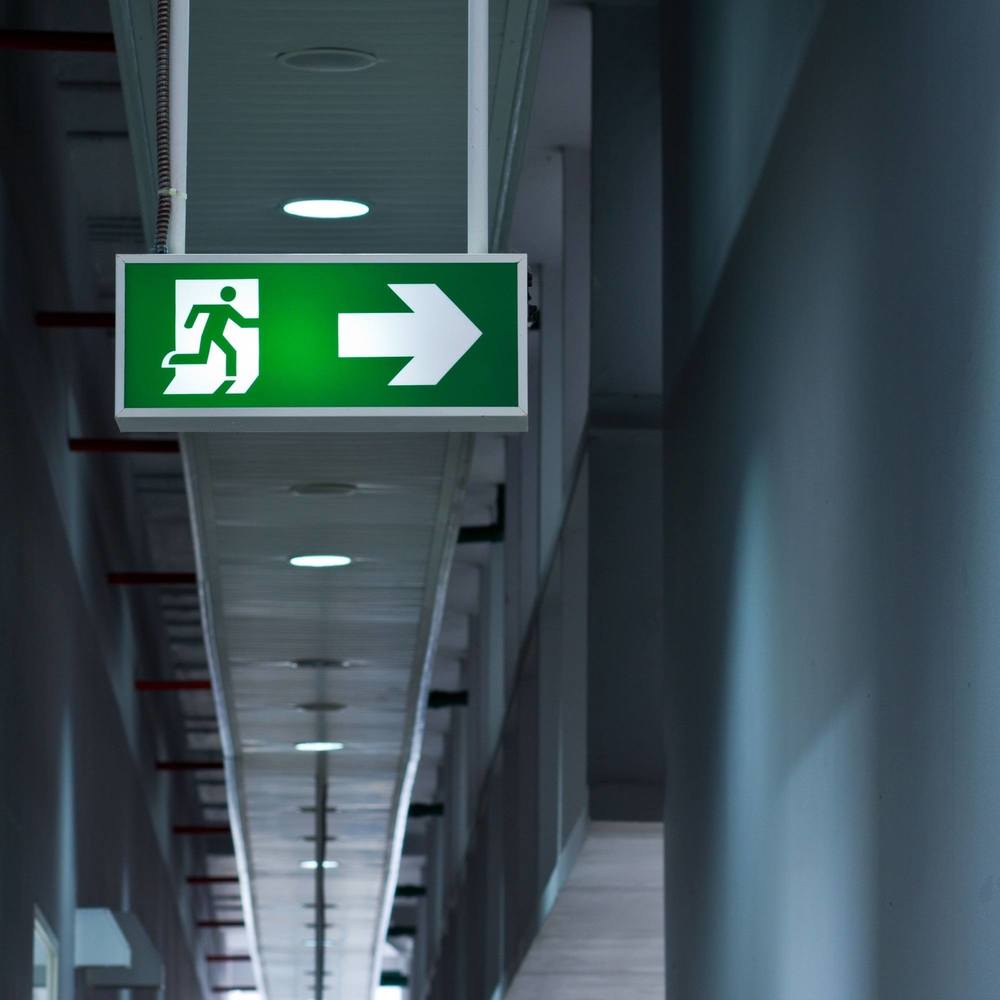This month, our Technical Focus is on Life Safety, and in particular – Emergency Lighting Systems. Joint Managing Director of Diamond, Steve Snoddon, explains when Emergency Lighting Systems are needed and what role they play in Life Safety.
What is Emergency Lighting and why is it needed?
Emergency Lighting is installed to provide illumination when the normal lighting fails. It plays an essential role in a premises’ overall Life Safety risk management. When a fire occurs within a premises, heat on the lighting circuits will often result in lighting failure.
The three key functions of an Emergency Lighting system are:
- To indicate the escape routes;
- To allow safe movement towards the escape routes, whilst minimising panic;
- To locate fire fighting equipment and fire detection equipment e.g. manual call points
When is Emergency Lighting a requirement?
In the UK, Fire Safety legislation requires emergency lighting systems to be provided in the following premises types:
- Offices and shops
- Community halls
- Schools
- Hotels and Hostels
- Premises that provide care
- Pubs, clubs and restaurants
- Tents and marquees
- Factories and warehouses
- Common areas in houses in multiple occupation
What is the applicable legislation governing Emergency Lighting systems?
In the UK, the applicable standard is BS 5266 parts 1, 7 and 8. But there may also be additional requirements for higher risk premises e.g. premises licensed for the sale of alcohol; very old premises; or premises where large numbers of people are gathered together. It is worth checking with your Local Authority for any additional requirements.
How complex is the design of Emergency Lighting Systems?
In basic terms, the correct positioning of signage and emergency lighting is essential in saving lives. On a more complex level, the position, angle and distance of escape signage, the luminarie spacing, mode of operation and lux levels are all really important, which is why a competent designer should always be involved when upgrading or installing the system.
Where are the Areas of Particular Risk?
- Points of emphasis – changes in floor level (steps/stairs), changes of direction (corners), first aid points, manual call points are all points of emphasis and the emergency lighting system should highlight these areas
- Areas requiring normal activities to be terminated safely e.g. kitchens, first aid rooms, treatment rooms, refuge areas for mobility impaired people
- Other areas of particular risk, including – passenger lifts; plant rooms; escalators and moving walkways; escape routes in multi-storey car parks
- Areas requiring illumination for investigation e.g. at the Fire Alarm Control and Indicating Equipment, to enable the fire and rescue officers to locate the source of the fire, and operate controls.
What maintenance requirements do Emergency Lighting systems have?
Emergency Lighting should be subject to daily, monthly and annual checks.
- Daily – the premises owner, or responsible person should visually inspect the lighting and escape signage for any visible defects
- Monthly – This is a short functional test. The premises owner, or responsible person should briefly activate the emergency lighting system via the test switch, and check that it operates
- Annually – a competent technician should carry out a full discharge of the system to ensure that the emergency lighting system stays on for a sufficient duration to allow for evacuation and/or immediate reoccupation (may be 1 hour or 3 hours depending on premises). He/she will also conduct a full inspection of escape signage and provide a general report on the status of the overall system. Maintenance only requires a test of the “as fitted” system, therefore it is really important that a competent designer has been involved at the outset. In some very high risk premises e.g. sleeping accommodation, testing may be carried out bi-annually.
What is the future for Emergency Lighting systems?
Lower energy consumption, LED technology and low maintenance is the way forward. Systems are now available which integrate with Fire Detection and Alarm systems, with lighting units fitting directly onto the sensor bases. Unique intelligent, addressable technology allows control and testing of individual luminaires, with graphics software allowing instant overview of the complete system, assisting maintenance tasks. Self-testing systems provide added peace of mind for the responsible person, and also reduce the maintenance requirements.
Contact the team at Diamond to discuss your Life Safety design, maintenance or installation requirements.





